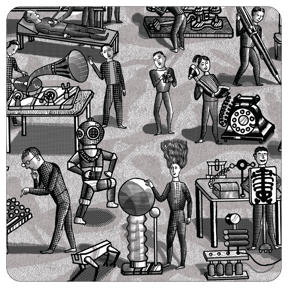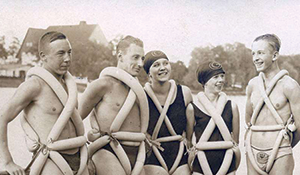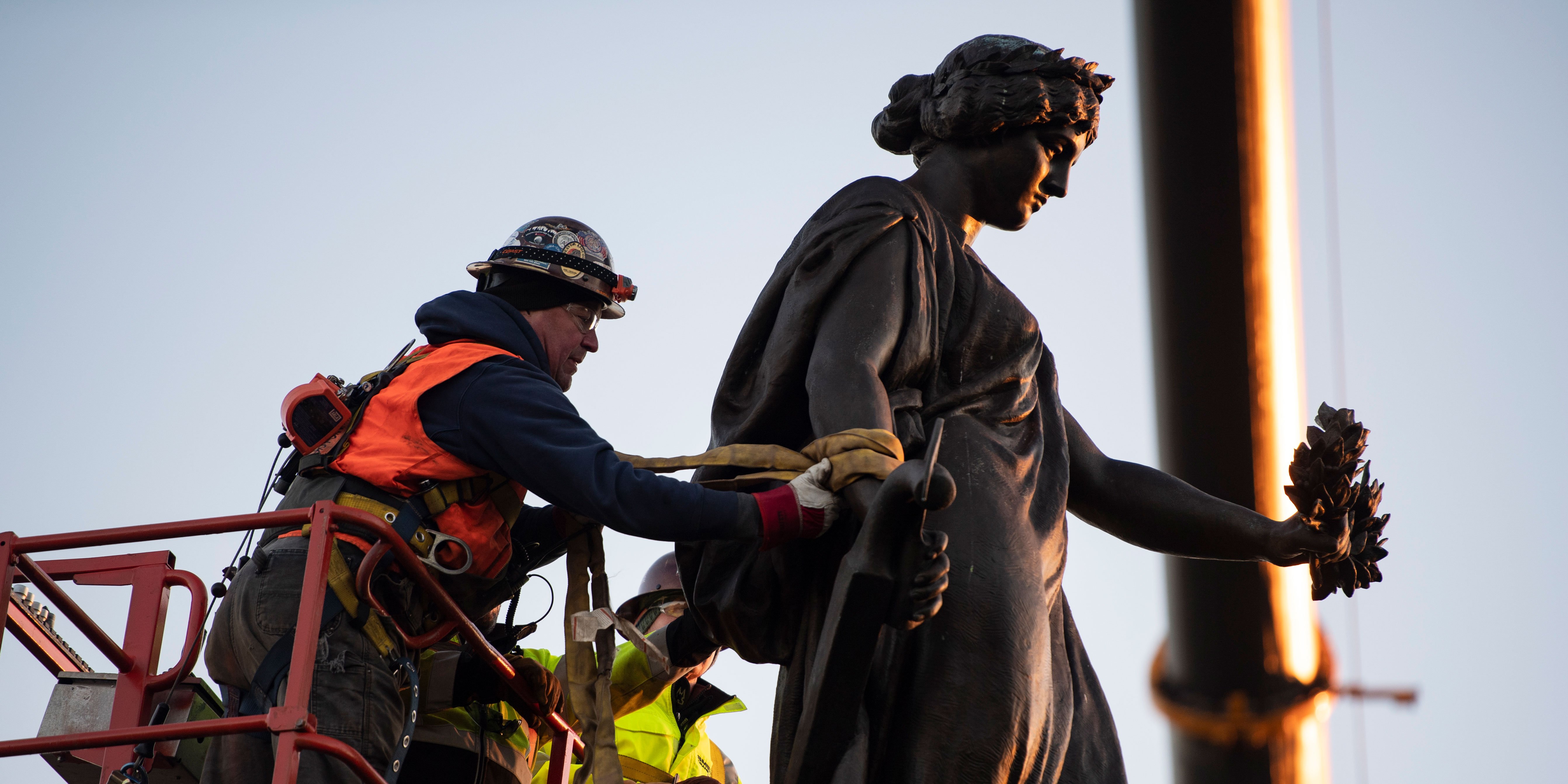Flappers, Fashion, and Feminism
They were the icon of the “Roaring” decade, complete with extravagant fashion and outlandish behavior. The term flapper is thought to come from the image of a baby bird attempting to fly for the first time. With their short skirts and shorter hair, these young women were leaving the confines of their nests to challenge gender norms in ways that they made sure would not go unnoticed.
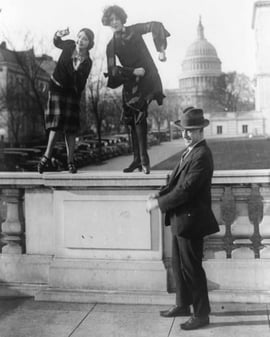
Rep. T.S. McMillan of Charleston, S.C. with flappers, Miss Ruth Bennett and Miss Sylvia Clavins, who are doing the Charleston.
Image: Library of Congress, 93508925
True Women, New Women, and Gibson Girls
Around the turn of the century, women shucked off their petticoats, bustles, and bone corsets. They donned button-down shirts with long sleeves, floor-length skirts with fewer underlayers, and lighter corsets that were less restrictive. They swept up their long hair, entered the workforce while men were at war, and pushed for equal rights in voting and control of their property. “True Women” of the Victorian era had been characterized by domesticity and submissiveness. These “New Women” were creating their own identities. They sought change that many people considered radical.
Illustrations of ideal New Women by artist Charles Dana Gibson circulated in mainstream magazines. His pictures set the standard for beauty, fashion, and female etiquette. Called “Gibson Girls,” the drawings depicted wealthy white women. These women pursued higher education, romance, marriage, physical well-being, and individuality. Gibson Girls were independent but flirtatious. The drawings emphasized that the “girls” were still there to serve men, not to threaten them. Slender but voluptuous, fragile but athletic, independent but reserved within the boundaries of femininity, the Gibson Girl straddled the line between freedom and tradition. Soon, she would be usurped by the flapper, a girl standing squarely on the side of feminism and rebellion.
Flapper Fashion, Consumer Culture
In the aftermath of World War I and the Spanish Flu, the decade roared in with the passage of the 19th Amendment in 1920, giving women the right to vote. Transportation became easier, faster, and more affordable, leading more young women to leave the nests of their rural family homes and move to cities. Having already gotten a taste of a life beyond homemaking, they competed with men in the business world, taking jobs as telegraph operators or shop workers. As more education and career opportunities became available for women, they became less and less economically dependent on men. Young women earned their own wages and became consumers. They spent their money on themselves, and fashion became expression.
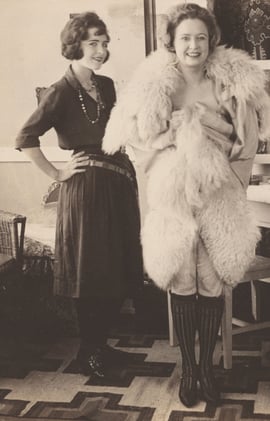
Making a flapper out of mother
Image: Library of Congress, 2023638489
With the Jazz Age in full swing, a flapper’s clothing had to be all about movement and presentation. Gone were the heavy hoop-skirts and the constricting corsets. Haircuts and hemlines got shorter, necklines dropped lower, and clothing became less form-fitting. Flappers were here to dance. They were also here to be seen, shedding dark, plain clothes for extravagant plumage! Dresses were elaborate, with colors, accents, and embellishments reflecting the popular art-deco style of the 1920s. Short skirts revealed shoes as a new fashion accessory. Soon shoes were desired for every occasion from dancing to sporting to swimming! This increased demand led dressmakers to become shoe designers, creating affordable footwear to match the exuberance of women’s outfits and lifestyles.
Youth in Revolt
Young women were reinventing themselves, and with them, the image of feminine beauty. They used their image to rebel against the idea that women should uphold society’s morals through temperance, modesty, and a submissive nature. Flappers didn’t want to be silent and watchful, waiting for their turn to get married. They were young and alive in a time of motion, from the cars to the Charleston, and they were swept up in the current of the decade. This revolution against the traditionalism of the previous generations was a dangerous one. Their rebellion was met with years of reactionary and regressive gender politics that women continue to struggle against today.
What is the point of studying the styles of flappers? When does the feminism come in? Don’t worry, I’ll feed you baby birds: the fashion was the feminism!
Flappers often wore more masculine clothing as well. This earned them the French nickname “la garçonne,” meaning “boy-girl” or “bachelor girl.” Along with short hairstyles, dressing like this was an attempt to show that they could do the same things as men while still being feminine. Flappers plucked their eyebrows and wore bold makeup, with bright red lipstick, dark eyeliner, and mascara. Before this time, “nice” girls didn’t wear makeup, but flappers wore cosmetics that were meant to be noticed.

Flappers, like the one shown here, ditched the stuffy clothing of the Victorian era for more daring, free-flowing fashion.
Image: Library of Congress Prints and Photographs Division, LC-DIG-ds-13023
How to Rebel Like a Flapper:
Step 1: Lose the Long Locks Look
Whether it’s the finger wave, the Marcel, the shingle bob, or the Eton crop, get rid of those long trusses and opt for a style that’s easy to maintain! Take a step away from the stuffy Victorian era and a step toward looking more masculine. This will help you be taken more seriously in the job market, and it will also give you control over your own femininity. It may be difficult to find a hair salon that can give you this style of cut, or a salon that will agree to cut your hair so short. Be sure to visit your local barber shop. They know what to do and are often willing to do it!
Step 2: Makeup Makeover
Put Snow White’s rose-red lips to shame with some bold lipstick! Don’t forget to powder your nose and apply some nice circles of rouge on those cheeks. Most importantly, emphasize those eyes with mascara and some dark eyeliner. If you like attention, or if you are competing for a job since men have returned from World War I, you can wear makeup to be noticed!
Step 3: If You Aren’t a Rectangle, You’re a Square!
Get rid of that corset and step into a dress that lets you dance all night! You can even get undergarments designed to get rid of any shapeliness! You’ll be more comfortable, and with a rectangular figure, you’ll be taking the emphasis off of curves that were exaggerated by previous generations. Take a deep breath and exhale. You can do it now that you’re not cinched into a corset! Plus, the added benefit of all the beads and baubles sparkling on your dress as you dance makes you a hit at any party!
Step 4: The Bee’s Knees
Forget dresses that drag on the floor. You can’t do the Charleston in a hoop-skirt, after all. No need for garters, either; just roll your stockings down. Raise your hemline and show off those knees! If someone catches a glimpse of them, won’t you have a laugh when their face turnsred! Imagine finding a knee so scandalous. What’s next, ankles?? Oh… Wait…
It’s Called Fashion. Look It Up.
Fashion can become a form of rebellion because it is often used as a form of control. Think about uniforms worn by students or by soldiers, rules about certain clothing in schools or religious places, or even that common warning of “no shoes, no shirt, no service.” For a long time before the 1920s, fashion kept women from riding bikes, playing sports, or sometimes even sitting down! Flappers saw themselves as equal to men and sought to prove it by doing the same things men did. Freedom to vote and freedom of movement were only the beginning. This newfound freedom of expression they attained through their clothing was another step in the direction of having all of the same liberties that men enjoyed. Earlier generations of women saw the flappers of the ‘20s as scandalous or immoral for something as simple as exposing their knees or wearing trousers. Those young women often faced real punishments because of it. Still, they chose to fly in the face of disapproval, creating their own identities through working, living, and dressing the way they wanted, rather than the way prescribed to them by tradition and old-fashioned values.
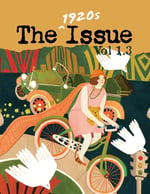 The 1920s Issue: Volume 1.3
The 1920s Issue: Volume 1.3
In this issue, students will jump into the roaring twenties. The 20s were a time of change, socially and politically. For the first time, many Americans owned cars and more people lived in cities than on farms. For many, these changes brought conflict and turmoil and for others it was a time of celebration.
